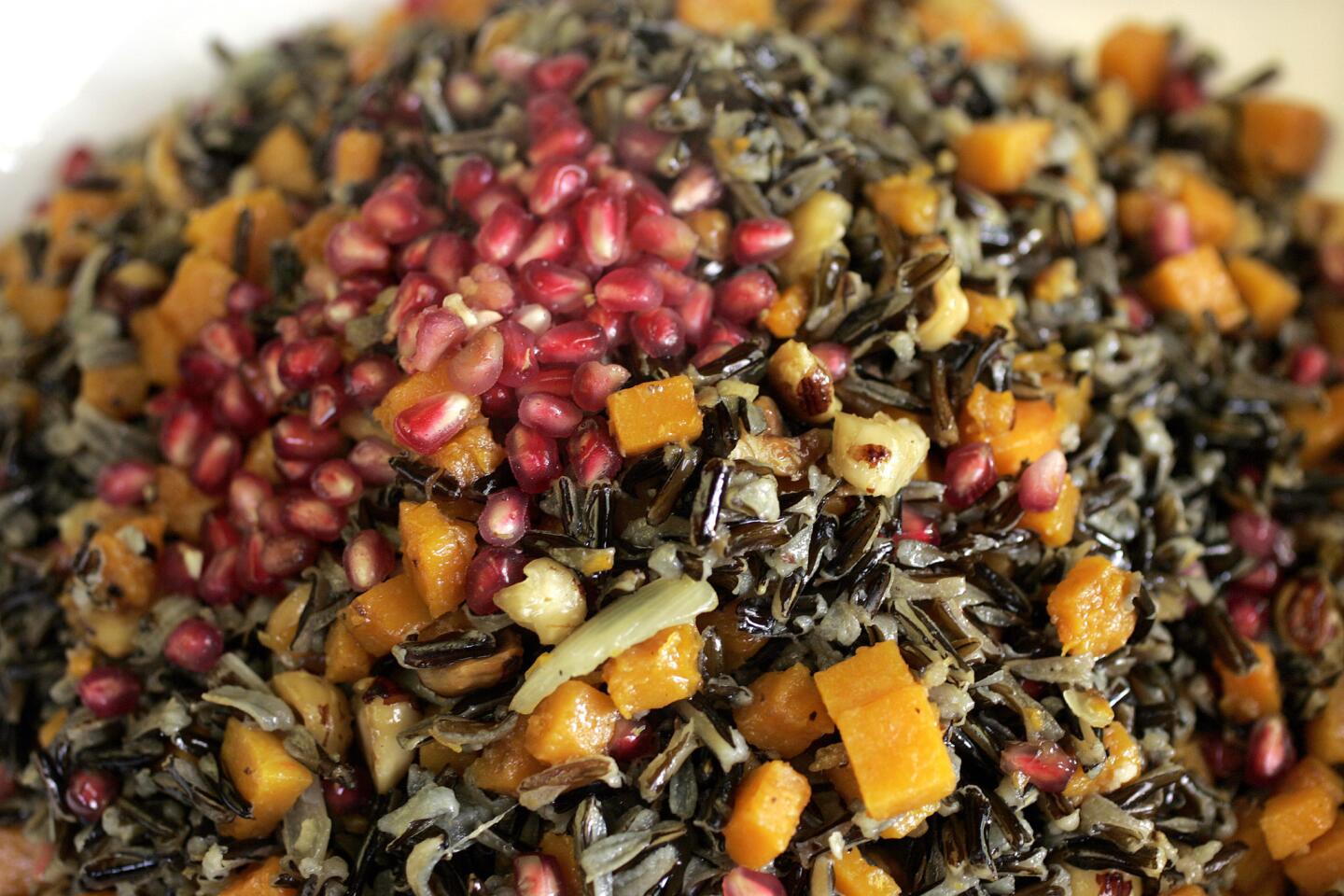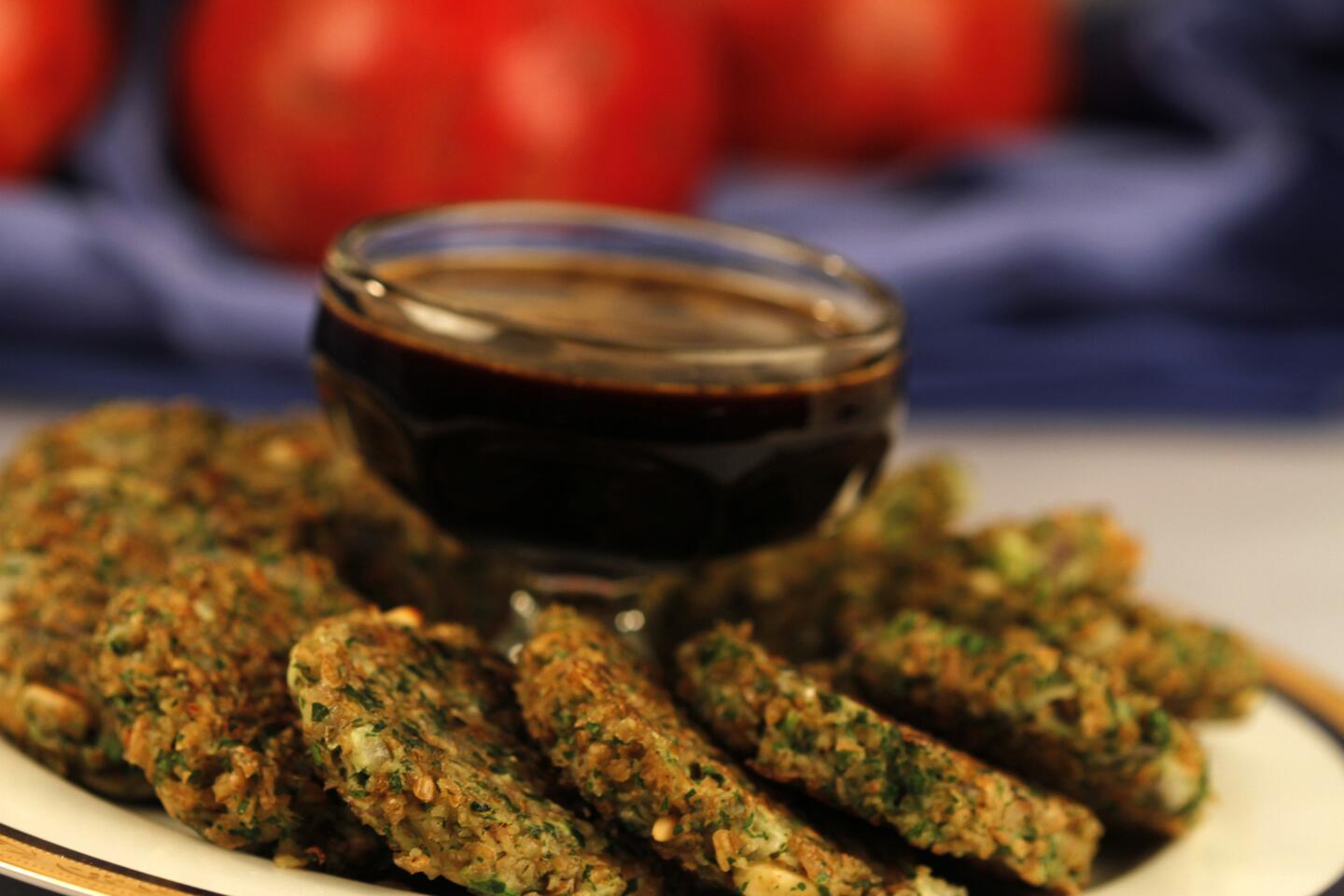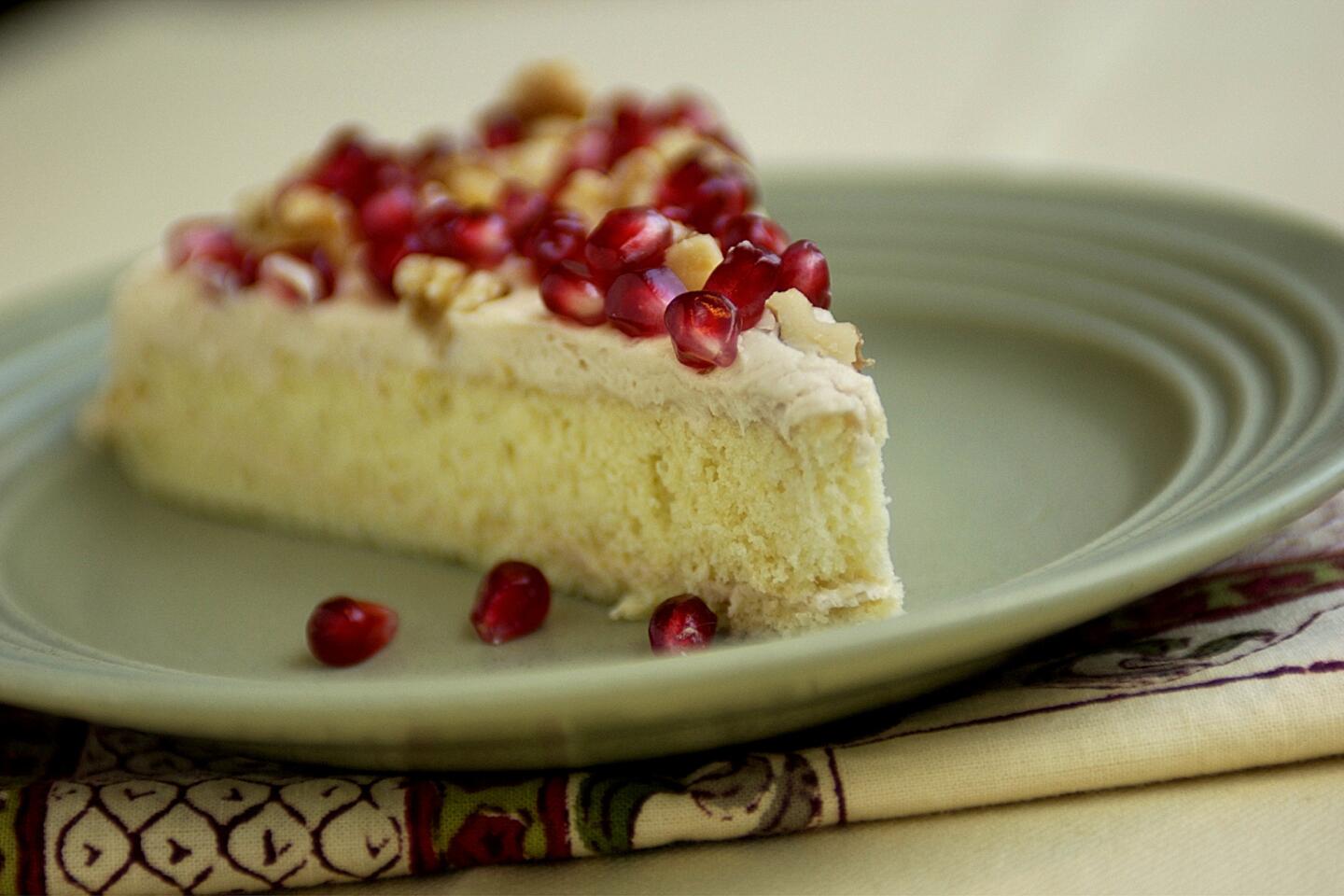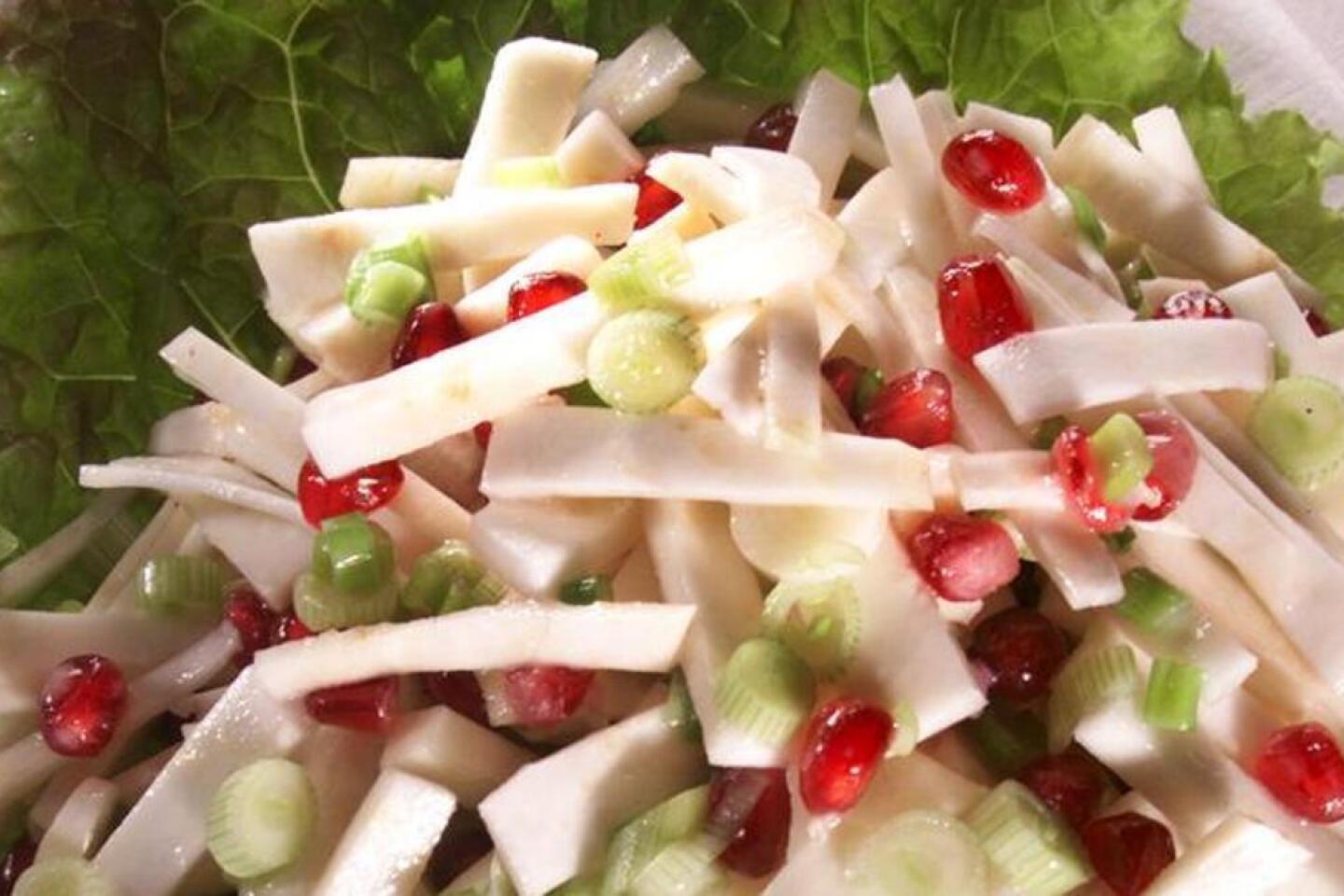Fall’s buried treasure -- getting to the heart of pomegranates
Sweet and tangy as they are, pomegranates are undoubtedly the “un-convenience” fruit.
Few other foods demand as much of the eater. Not only do you have to break through that tough, leathery outer shell, but then you have to pry apart the pith to get to the delicious, though admittedly seedy, edible parts. (Technically, these are not seeds but arils – tiny, fleshy, fruit-like structures covering the seeds.)
And after all that work you may well wind up with all of your clothes stained bright red. That’s probably why you rarely see anyone walking down the street snacking on a pomegranate. Dexter had nothing on a pomegranate eater.
There are a couple of easy ways to clean a pomegranate, though. My preferred method is this: Score the skin in quarters and open it up. Then put each quarter underwater and use your fingers to ream the seeds from the inside. The pith is light and will float to the top; the heavier seedy fruit will sink. Here’s a video to show you how.
There’s another popular method that seems to work well, too, and it’s worth trying even if only for the novelty. In this technique, you cut the pomegranate in half latitudinally, then holding the fruit cut-side down over a bowl, pound on it with a ladle or wooden spoon. Most of the seeds will pop right out.
Pomegranate fruit is usually used as a garnish -- ruby gems on a fall or winter plate. For a more usable form of pomegranate flavor, look for juice (now widely available) or molasses, which can be found in Middle Eastern stores.
How to choose: Select pomegranates that are heavy for their size; they’ll be the juiciest. Don’t worry too much about the color of the rind: It can vary from completely red to reddish-brown without affecting the quality of the edible fruit. Do look for deep color though.
How to store: Pomegranates can be stored at room temperature for a couple of days; after that they should be refrigerated. Stored this way, they’ll last at least three to four weeks. Once they’ve been seeded, the seeds also can be frozen in a tightly sealed bag.
Are you a food geek? Follow me on Twitter @russ_parsons1
More to Read
Eat your way across L.A.
Get our weekly Tasting Notes newsletter for reviews, news and more.
You may occasionally receive promotional content from the Los Angeles Times.


















